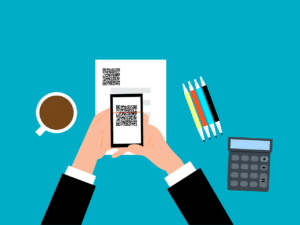In 2020, 73% of businesses plan to make all their technology systems cloud-based, and nearly all companies use at least one SaaS (Software as a Service) tool.
While the cloud has driven both innovation and leveled the playing field for small businesses in North Carolina. It has also brought a new set of security concerns.

When companies are using on-premises software, they typically deploy standard security services like local firewalls and centralized backup. But when your data is spread throughout several cloud platforms. Instituting consistent security policies and keeping that data secure from account hacks presents new challenges.
How to Reduce Your Risk of a Cloud-based Security Incident
The more cloud services a company uses, the more risk of a data breach, malware infection, or other security incident.
The average employee uses 8 different cloud apps and the average small business, uses between 40 to 79 different SaaS platforms.
Here are some of the biggest threats to address when it comes to the security of the cloud platforms that you use for business processes.
System Vulnerabilities
Not all cloud platforms are designed with the same skill or level of security. Even those made by large software manufacturers often have vulnerabilities that can be exploited by hackers.
Keeping all cloud apps updated as those updates are issued is the best way to ensure system vulnerabilities are patched as soon as possible.
Credential Theft/Account Hack
A popular ploy of phishing attacks is to send users to a fake login form for a platform like G Suite or Microsoft 365 that’s designed to steal their login credentials.
Weak passwords also make it easy for unauthorized users to break into a cloud account that can grant access to company files, email, and more.
Microsoft sees over 300 million fraudulent sign-in attempts per day on their services.
One of the best ways to avoid compromised credential hacks is to use multi-factor authentication. When used along with a single sign-on (SSO) tool, it can both secure cloud accounts and streamline the login process.
Data Loss Incidents
Unfortunately, users often think that just because they’re using a cloud platform, that their backup is automatically taken care of. But cloud storage and cloud platforms are not the same as a backup and recovery system.
Data loss can happen in a number of ways, including:
- Syncing errors
- Cloud service outage (server crash, etc.)
- Accidental or malicious deletion
- Ransomware attack
It’s important to separately back up cloud services in a 3rd party backup tool to prevent data loss.
Weak Security Settings
Companies using a cloud platform “out of the box” may just leave all the settings at the default, which may not be the most secure. Often, software manufacturers will have their platform default to the more user-friendly settings, which may leave security vulnerabilities.
Administrators need to fully explore cloud platforms and use tools like Microsoft Secure Score to review their platform risk and take recommended actions to better secure their cloud service.
Incohesive Security Policies
When companies are using multiple cloud tools, trying to enforce standard document security and compliance rules across them all can be difficult.
What happens if a patient health record is properly protected with a “do not copy” watermark in one cloud app. But that security is dropped when it moves to a different one?
One way to maintain a consistent security and compliance structure across all cloud platforms is to use a Cloud Access Security Broker (CASB).
Like Microsoft Cloud App Security. This is a tool that allows you to implement security policies across all your SaaS tools.
Mobile App Security
One of the advantages of cloud services is that they can be accessed by multiple devices, including through mobile apps. This allows users the flexibility to work from anywhere and on whichever device is easier for them at any given time.
Unfortunately, mobile apps also mean unique security risks. In a survey of mobile apps, it was found that 38% of iOS apps and 43% of Android apps contained high-risk vulnerabilities.
Using system vulnerability checks. Fully vetting mobile versions of cloud platforms, and using a mobile device manager can help mitigate data breach risks due to unsecure mobile applications.
Insider Attacks
Whether you have a rogue employee or a hacker that’s gained access by stealing a login because once a user is logged into your cloud platform.
They can take multiple malicious actions. This includes planting malware and stealing or deleting company files.
A few ways to mitigate the risk of insider attacks to your cloud services include:
- Using the rule of least privilege to only give users the minimum system access that their job requires.
- Using a CASB that allows you to monitor user activity and revoke access remotely.
- Implement document security controls, like sensitivity labels in Microsoft 365, that reduce the chance a document can be mishandled.
Are Your Cloud Applications Leaving You at Risk?
RCOR can help your North Carolina business with a full review of your cloud application security to ensure you’re not at risk of a cloud-based data breach.
Contact us today to schedule an IT security consultation. Call 919-263-5570 or contact us online.




